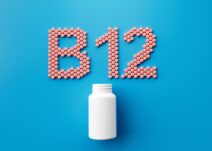According to the Migraine Research Foundation, 38 million Americans suffer from migraines. 18 percent of those affected in the U.S. are women — I am one of them. Interestingly, migraines tend to be more prevalent in ages 25 to 55 (I am 34 years-old) while 90 percent have a family history of migraines. Indeed, migraines do also run in my family — my sister and nephew for example. Coincidentally, my sister has a brain aneurysm while my nephew and I both have cysts on our brains. From experience I can say that migraines — a throbbing pain generally on one side of the head brought on by inflamed blood vessels and nerve fibers — are both debilitating and extremely difficult to treat.
Often times it can take months, even years, for a person to discover why they are experiencing these types of headaches, therefore a doctor will typically prescribe a pain reliever similar to Excedrin, which contains acetaminophen and caffeine, along with a sedative or muscle relaxer for immediate but temporary comfort. Unfortunately, a tolerance to this type of medicine is reached within a few months, and so if the cause of a migraine hasn’t been determined yet, the person is back where they started.
What I learned through my own journey is that there could be many different factors for why someone is experiencing chronic migraines. The key is to find what that is and treat it at its core. It could be an aneurysm or cyst blocking blood circulation, or it could be the over- circulation of blood. It could be a food allergy or nutrient deficiency. The person could just be someone who is naturally prone to headaches and needs to monitor their triggers. It could be a broken nose, wearing the wrong eyeglass prescription or a TMJ dysfunction. Once the reason for a migraine is determined, it becomes much easier to treat and manage.
One important thing I learned is that there are two kinds of people: the ones prone to getting migraines and the ones who aren’t. The ones who aren’t only experience a headache after hurting their head or during a hangover. The other group tends to get headaches regularly, and is affected by their environment and by what they consume. For the latter — which I am part of — avoiding a migraine becomes part of your daily routine. If it is too hot or too cold, I get a migraine. I learned, through keeping a food log, that another trigger for me is the artificial sweetener aspartame, so I steer clear of anything labeled “diet” or “light.” Too much or too little sleep can also be a trigger; the key is to live a regimented life.
Apart from identifying triggers, consuming certain nutrients are also said to support migraine relief, without the side effects — or developing tolerance — that over-the-counter and prescribed medicines often come with. These are some of the nutrients you can recommend to your migraine-prone shoppers:
Caffeine. Because blood vessels tend to enlarge when a migraine begins, caffeine is helpful because it contains “vasoconstrictive” properties that cause the blood vessels to narrow and restrict blood flow, minimizing the pain.
Magnesium.Research points to a link between magnesium deficiency and migraines. Magnesium is also an essential component for proper nerve function.
Riboflavin.Essential in the production and growth of red blood cells, low levels of riboflavin (vitamin B-2) can be attributed to migraines.
CoQ10.Found within the body’s cells, supplementation of CoQ10 can also support in migraine relief and can be found in foods like broccoli, cauliflower, and strawberries.
Feverfew.Dried feverfew leaves have been found to aid migraines because of the substance parthenolide, which relieves muscle spasms, stops blood vessels from contracting and has anti-inflammatory properties.
Curcumin.The anti-inflammatory component within turmeric, curcumin aids in the inflammation of the cranial blood vessels.
Before supplementing and/or medicating, consulting with a doctor should always take priority. A doctor will likely recommend the migraine sufferer have an MRI scan to determine if the pain is being caused by something that needs immediate attention.WF

Julissa Catalan Editor
Published in WholeFoods Magazine June 2017










